Featured
Pingoo Bird
BASIC ANIMATION
R&D tax relief goes far beyond 'blue sky' research - all types of business can benefit
How 'clean eating' fad can spark a dangerous spiral into depression and illness
DINOGOO
sport
travel
MUGOO
Hindi kids cartoon | Funny Video | Pingoobird Special
Deconstructing a Jump
Deconstructing a Jump
The jump is another very common type of animation to do for a character. Just as we did with previous animations, we will take the time to review each key pose in the animated jump before you actually do the animation with one of your characters. Here is a break down of those poses:
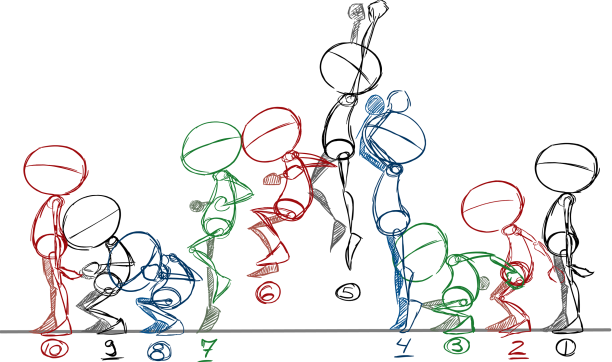
Anticipation
By now, you will have encountered anticipation in much of the animation you have seen. Before the character takes action, he will anticipate that action. This will be evident in the animation and you need to plan it out.
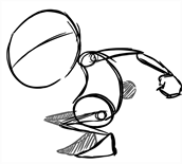
Push
This push is the opposite of the anticipation. Instead of crouching to take in the energy needed to jump, the character will now push it all toward its destination (in this case, he is jumping straight up).
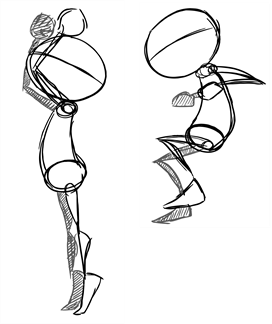
Stretch
The stretch is that very moment where all the energy is released and the character is at its highest. Then, as the second image is showing, the charcter will start being pulled again by gravity.
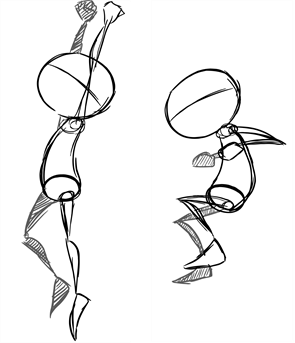
Impact
Finally, there is the moment of impact, when the character needs to squash again because of the weight of its body hitting the ground. Following the impact, he can get back up again.
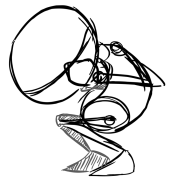
Deconstructing a Jump
The jump is another very common type of animation to do for a character. Just as we did with previous animations, we will take the time to review each key pose in the animated jump before you actually do the animation with one of your characters. Here is a break down of those poses:

Anticipation
By now, you will have encountered anticipation in much of the animation you have seen. Before the character takes action, he will anticipate that action. This will be evident in the animation and you need to plan it out.

Push
This push is the opposite of the anticipation. Instead of crouching to take in the energy needed to jump, the character will now push it all toward its destination (in this case, he is jumping straight up).

Stretch
The stretch is that very moment where all the energy is released and the character is at its highest. Then, as the second image is showing, the charcter will start being pulled again by gravity.

Impact
Finally, there is the moment of impact, when the character needs to squash again because of the weight of its body hitting the ground. Following the impact, he can get back up again.

Jump animation
Jump animation
To start my research into how the jump animation would be created, I wanted to get an idea of the key poses that would be incorporated.
I noted that there were 6 poses;
- The idle
- anticipation/ build up
- Initial jump contact
- Highest/ peak pose
- Recovery
- Neutral/ idle pose
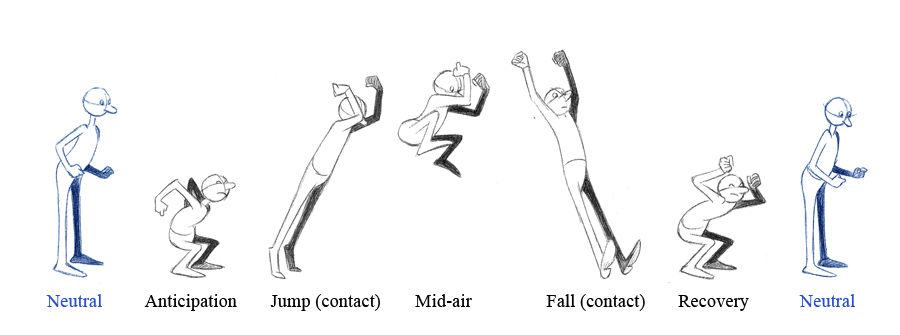
Richard William’s jump breakdown.(Williams, 2001).
As Williams’ poses are very exaggerated, I wanted to have a look at a realistic reference. I found a great one online. Using this, I refined the feet positions and the arms. In fact, I redid the arm movements entirely, due to some faults I found that twisting of the upper arm was occurring when I moved them passed a certain point. Alec explained that this could be due to two things; the gimble mode and the twist correction not being on. I did both of these things and it prevented the twisting to a certain point- I think it also gives to the limits of the rig itself.
The jump reference that I used. I slowed the video in Quicktime Player to get a better look at the poses. (YouTube, 2016).
After I created this rough blocking, I went back and added additional poses, to give a better idea of timing. Andrew Coyle explained this really well in his blog. He created a really useful diagram (below) of the breakdowns of body positions for the jump.

Andrew’s diagram. (Cloytoons.wordpress.com, 2016).
This was one of the things I found the most confusing when doing the walk cycle- the shape of the back and tilt of the hips. This was a really great reference for me – Andrew would be proud!
My next stages will be to start polishing up the jump itself, giving a bit of ease in and out, and fixing the overlapping action in the arms.
Wish me luck!
References
Williams, R. (2001). The animator’s survival kit. London: Faber.
YouTube. (2016). Jump Reference 59.94fps. [online] Available at: https://www.youtube.com/watch?v=m4kr4dGU4qA [Accessed 15 Oct. 2016].
Cloytoons.wordpress.com. (2016). Animation | CLOY TOONS. [online] Available at: https://cloytoons.wordpress.com/category/creative-strategies/animation/ [Accessed 15 Oct. 2016].
Jump animation
To start my research into how the jump animation would be created, I wanted to get an idea of the key poses that would be incorporated.
I noted that there were 6 poses;
- The idle
- anticipation/ build up
- Initial jump contact
- Highest/ peak pose
- Recovery
- Neutral/ idle pose

Richard William’s jump breakdown.(Williams, 2001).
As Williams’ poses are very exaggerated, I wanted to have a look at a realistic reference. I found a great one online. Using this, I refined the feet positions and the arms. In fact, I redid the arm movements entirely, due to some faults I found that twisting of the upper arm was occurring when I moved them passed a certain point. Alec explained that this could be due to two things; the gimble mode and the twist correction not being on. I did both of these things and it prevented the twisting to a certain point- I think it also gives to the limits of the rig itself.
The jump reference that I used. I slowed the video in Quicktime Player to get a better look at the poses. (YouTube, 2016).
After I created this rough blocking, I went back and added additional poses, to give a better idea of timing. Andrew Coyle explained this really well in his blog. He created a really useful diagram (below) of the breakdowns of body positions for the jump.

Andrew’s diagram. (Cloytoons.wordpress.com, 2016).
This was one of the things I found the most confusing when doing the walk cycle- the shape of the back and tilt of the hips. This was a really great reference for me – Andrew would be proud!
My next stages will be to start polishing up the jump itself, giving a bit of ease in and out, and fixing the overlapping action in the arms.
Wish me luck!
References
Williams, R. (2001). The animator’s survival kit. London: Faber.
YouTube. (2016). Jump Reference 59.94fps. [online] Available at: https://www.youtube.com/watch?v=m4kr4dGU4qA [Accessed 15 Oct. 2016].
Cloytoons.wordpress.com. (2016). Animation | CLOY TOONS. [online] Available at: https://cloytoons.wordpress.com/category/creative-strategies/animation/ [Accessed 15 Oct. 2016].
Pingoo Bird Season 2019 : Dinosaur Park
Dinosaur park? Afraid, run now! Episode 03 Dinosaur Park ABOUT Pingoo Bird: Pingoo Bird is cute and full of curiosity. Pingoo explores the world not by being angry or irritable, but by being enthusiastic, sometimes funny. Pingoo can't talk, can't fly, but he has some special ability, such as Kamehameha, haha. Pingoo Bird comes from the legendary world, he was born on the World Tree. He travels to Earth, and explores our earth with all his enthusiasm and energy. His adventures often fail miserably. But he didn't give up, he continued ...... So what are you waiting for? Subscribe Now and enable ALL notifications! Pingoo Bird is the main project of Pingoo Picture Team. #pingoo #cartoon #funny #animated #cartoonsforkids #cartoonforkids #cartoonsforchildren
Dinosaur park? Afraid, run now! Episode 03 Dinosaur Park ABOUT Pingoo Bird: Pingoo Bird is cute and full of curiosity. Pingoo explores the world not by being angry or irritable, but by being enthusiastic, sometimes funny. Pingoo can't talk, can't fly, but he has some special ability, such as Kamehameha, haha. Pingoo Bird comes from the legendary world, he was born on the World Tree. He travels to Earth, and explores our earth with all his enthusiasm and energy. His adventures often fail miserably. But he didn't give up, he continued ...... So what are you waiting for? Subscribe Now and enable ALL notifications! Pingoo Bird is the main project of Pingoo Picture Team. #pingoo #cartoon #funny #animated #cartoonsforkids #cartoonforkids #cartoonsforchildren
Dubai: High life begins in the clouds
Pingoo Bird Special Episode 12: Plant a Tree - Let it Grow | Funny Cartoons
Pingoo Bird Special Episode 12: Plant a Tree - Let it Grow | Funny Cartoons
Pingoo Bird March 18, 2017 2 commentsPingooBird Journeys - Last Christmas Cartoon For Kids
Category
- basicanimation (3)
- business (3)
- dinogoo (1)
- entertainment (5)
- featured (1)
- lifestyle (5)
- mugoo (3)
- pingoobird (6)
- Sport (9)
- travel (8)
- videos (2)
Popular Posts
Pingoo Pictures Co., Ltd | Address: Dong Thanh Village, Minh Tam Commune, Thieu Hoa District, Viet Nam | Email: contact@pingoobird.com | Phone:















